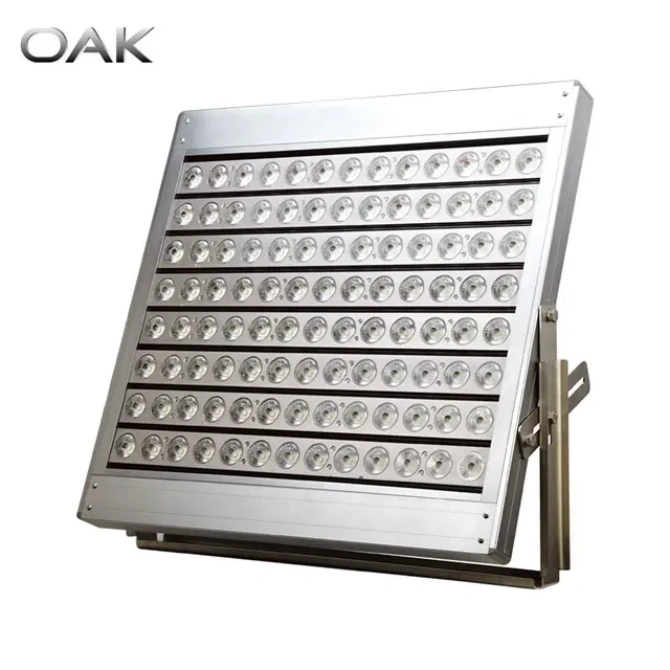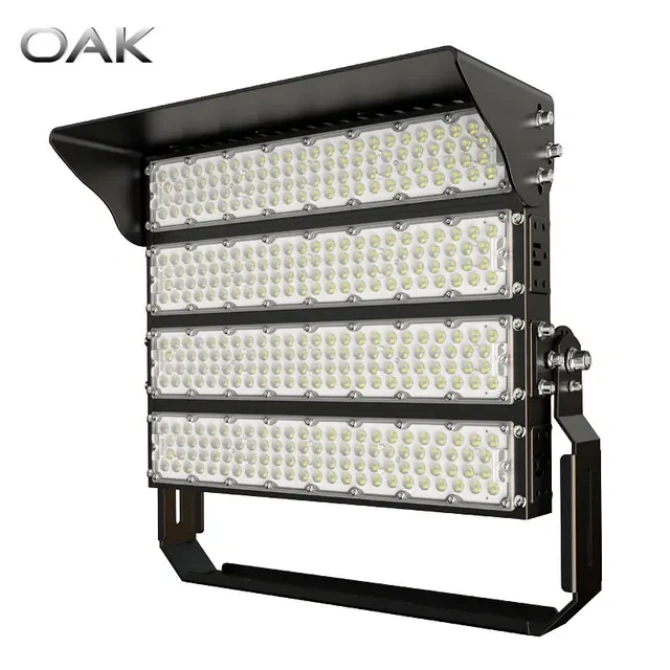
The Growing Demand for Energy-Efficient Lighting
In the face of global energy challenges and environmental concerns, lighting solutions that reduce power consumption without compromising performance have become indispensable. One of the most impactful innovations in this field is the LED flood light. These luminaires have gained immense popularity across diverse sectors—from industrial facilities and sports stadiums to architectural landscapes and public infrastructure. But what sets LED flood lights apart is not merely their modern appearance or long lifespan—it’s their remarkable energy efficiency.
Understanding what makes these lighting systems so efficient requires a closer look at the technologies behind them. From the core principles of LED lighting to the optical and thermal engineering that supports them, every layer is carefully designed to minimize energy loss and maximize light output. Companies like OAK LED CO. Limited have further refined these technologies with proprietary innovations, delivering ultra-efficient LED floodlights that are optimized for high performance and low energy use.
How LED Technology Enables Efficient Lighting
At the heart of LED flood lights lies a revolutionary method of producing light. Unlike traditional lighting technologies such as halogen or metal halide, which rely on heating filaments or gases to generate light, LEDs (light-emitting diodes) produce light through a process called electroluminescence. When electrical current passes through a semiconductor material, it releases photons—light—directly, without relying on thermal processes. This direct conversion of electricity to light eliminates the massive energy waste associated with heat production.
This fundamental advantage in energy conversion gives LEDs an edge in luminous efficacy, a measure of how many lumens (light output) are produced per watt of power consumed. High-quality LED flood lights, especially those developed by OAK LED, can achieve luminous efficacies well above 150 lumens per watt. This means more light, less power, and ultimately lower energy costs for end-users.
Precision Optics: The Secret to Maximizing Useful Light
One of the key reasons LED flood lights are so efficient isn’t just their ability to produce light—it’s how they distribute it. In traditional lighting systems, a large portion of light is wasted due to scattering, reflection losses, or poor focus. To address this inefficiency, OAK LED floodlights employ precision-engineered PC (polycarbonate) optical lenses. These lenses are specifically designed to direct light exactly where it is needed.
By shaping and focusing the light beam, these optical systems reduce unnecessary light spill and minimize dark zones. As a result, the illumination is more uniform and effective, often requiring fewer fixtures to achieve the same lighting coverage. This targeted approach reduces total system power requirements, further enhancing energy efficiency. Moreover, by eliminating glare and wasted light, optical lens technology improves visual comfort and safety in applications such as stadium lighting, transportation hubs, and industrial yards.
Superior Thermal Management for Sustained Efficiency
Another cornerstone of LED flood light efficiency is heat management. While LEDs generate less heat than traditional light sources, the heat that is produced must still be effectively managed to maintain performance. Overheating can significantly degrade light output, reduce lifespan, and cause premature failure of the LED chips and drivers.
To combat this, OAK LED flood lights feature robust thermal designs using advanced materials such as high-grade aluminum alloys and optimized heat sinks. These heat sinks are engineered with large surface areas and airflow channels that allow rapid dissipation of heat away from critical components. Keeping the internal temperature of the fixture low ensures that the LEDs maintain peak performance with minimal power loss over time. Efficient thermal control is not only essential for longevity but also for sustaining high luminous output per watt over thousands of hours of operation.
![]()
The Role of Advanced LED Drivers and Smart Controls
Beyond the chips and optics, the electronic drivers powering LED flood lights also play a pivotal role in determining energy efficiency. A high-quality driver efficiently converts incoming AC power to the stable DC power required by the LEDs. Poorly designed drivers can introduce losses through heat, electrical noise, or inefficient voltage regulation. In contrast, OAK LED flood lights integrate premium constant-current drivers with power factor correction (PFC), ensuring minimal power wastage and stable performance even under varying electrical conditions.
Modern LED drivers also support smart lighting features such as dimming, motion sensing, time scheduling, and remote monitoring. These features enable users to fine-tune light levels based on real-time needs, significantly reducing energy use during off-peak periods. For example, a warehouse may reduce lighting by 50% during non-operational hours, or a sports venue may activate full lighting only during live events. Such adaptive control mechanisms elevate the functional efficiency of the lighting system as a whole.
Directionality and Lighting Design Optimization
One often overlooked but critical aspect of LED efficiency is the directional nature of the light output. Traditional lighting technologies emit light in all directions, requiring reflectors to redirect the light. This introduces additional losses due to reflection inefficiencies. LEDs, on the other hand, emit light in a specific direction. This inherent directional nature of LEDs simplifies the design of the luminaire and allows for more efficient use of light.
OAK LED flood lights take full advantage of this by offering customizable beam angles and modular lighting structures. This means designers and architects can tailor the lighting layout to precisely match the space, eliminating over-lighting and ensuring each watt is put to its best use. Whether it’s a narrow-beam spotlight for architectural highlights or a wide flood beam for parking lots, every fixture is engineered for optimal coverage and efficiency.
Long Lifespan Reduces Energy Lifecycle Costs
Energy efficiency isn’t just about performance during operation; it also includes the product’s lifecycle impact. A lighting system that lasts longer uses fewer resources in manufacturing, packaging, transportation, and installation. OAK LED flood lights are built to last over 100,000 hours, vastly outlasting traditional lights, which typically require frequent replacement.
Over time, fewer replacements translate into less labor, lower material consumption, and fewer disruptions in energy use. When viewed holistically, this durability enhances energy efficiency across the entire lifespan of the lighting system. It also provides a compelling return on investment for facility managers seeking long-term sustainability and reliability.
Environmental Resilience and Efficiency in Harsh Conditions
Energy performance can be severely compromised in challenging environmental conditions. High humidity, extreme temperatures, or dust intrusion can all degrade lighting efficiency. OAK LED addresses this by engineering flood lights that are IP66-rated for water and dust resistance and constructed with rugged, corrosion-resistant materials. Whether deployed in coastal environments, high-altitude locations, or dusty construction sites, the luminaires continue to perform reliably and efficiently.
This resilience ensures that lighting systems retain their energy-saving performance even in less-than-ideal conditions. That means less downtime, fewer repairs, and continued energy savings regardless of the external environment.
Conclusion
Ultimately, the energy efficiency of LED flood lights is not the result of a single component or feature—it is the outcome of a holistic system design philosophy. From the basic physics of LED semiconductors to the fine-tuned optical, thermal, and electronic subsystems, every part of the luminaire is engineered for maximum performance with minimum energy input.
At OAK LED CO. Limited, energy efficiency isn’t treated as an add-on—it is the foundation of the product. Their LED flood lights are the culmination of years of engineering innovation aimed at delivering bright, reliable, and efficient lighting solutions for modern infrastructure needs. Whether for a stadium, an airport, or a smart city initiative, OAK LED offers technology that empowers organizations to illuminate with intelligence and sustainability.
For those looking to invest in lighting systems that align with both economic and environmental goals, LED flood lights from OAK LED provide a future-proof choice that delivers unmatched efficiency without compromising quality. Visit www.oakleds.com to explore the full range of high-performance LED lighting solutions designed for the next generation of energy-conscious projects.













